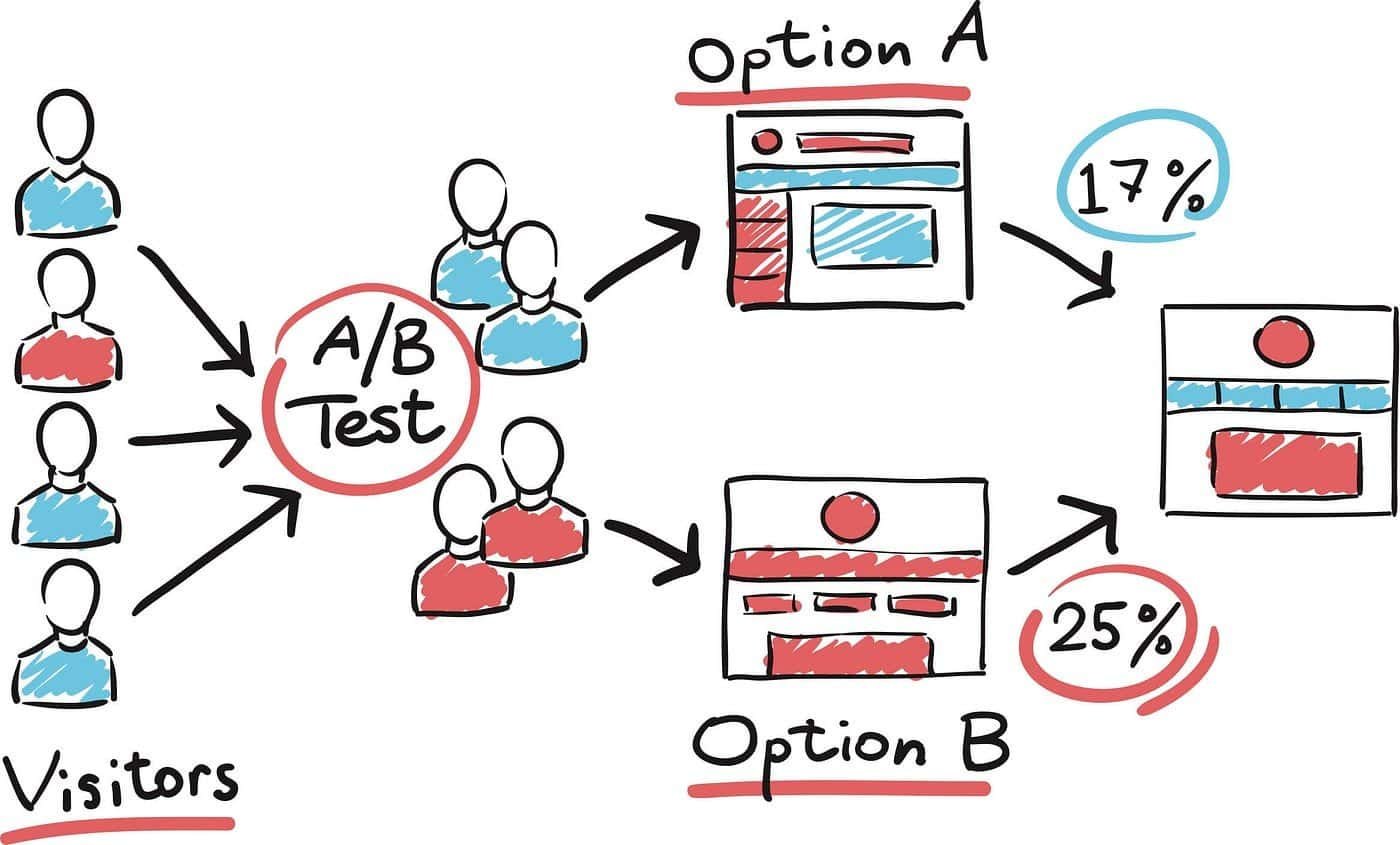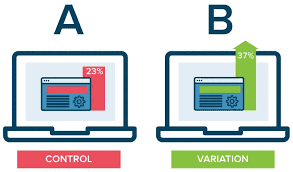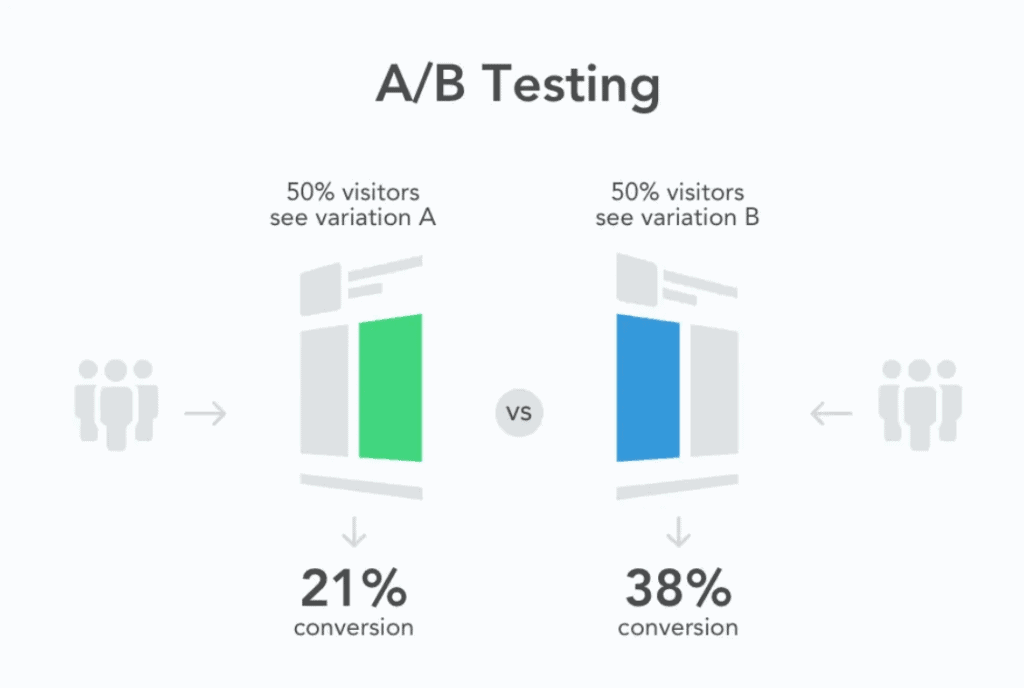Hi there! Do you want to generate leads or earn passive income with your YouTube videos? Then you need to create impactful hooks that capture your audience’s attention within the first few seconds. The initial few seconds of a video, including the hook, significantly influence a video’s click-through rate (CTR). A/B testing your YouTube hooks is one of the most powerful investments you can make to achieve this.
This blog post will explore how to create your own impactful and powerful hook templates, as advised by marketing experts. It will show you how to come up with the right hook idea and A/B test your YouTube hooks to find what works best. Plus, it will provide you with example hooks that performed really well for videos.
What’s A/B Testing for YouTube? And Why Should You Care?
A/B testing for YouTube involves comparing two versions of a video element (such as thumbnails, titles, descriptions, or even video content) to determine which one performs better in terms of essential YouTube metrics. These metrics include:
- Click-through rate (CTR)
- Watch time
- Viewer engagement
This method is grounded in data-driven decision-making, allowing creators to optimize their content for maximum impact. Companies that use data-driven marketing are six times more likely to be profitable year-over-year. Creators can consistently improve their hooks based on real performance data.
Why is A/B Testing Important for Serious YouTubers?
If you want to generate leads with your YouTube videos or earn a good passive income, then you need to understand how A/B testing actually benefits your video content.
1. Skyrocket Your Click-Through Rate (CTR) and Watch Time
A/B testing helps identify the most compelling hooks, which boosts the CTR, ensuring more users start watching the video. By experimenting with different opening lines, you can determine which hook grabs attention and prompts viewers to click on the video.
2. Keep Viewers Glued to the Screen: Enhanced Viewer Retention
A/B experimentation can help you find the most engaging way to start your videos, leading to higher viewer retention. A strong hook can captivate the audience from the outset and encourages them to watch the video longer. YouTube’s algorithm favors videos that keep viewers engaged, promoting them to a broader audience.
3. No More Guesswork: Data-Driven Decisions
A/B testing removes the guesswork from content creation. Creators can consistently improve their hooks based on real performance data.
4. The Secret to Viewer Loyalty: Optimized User Experience
Understanding which hooks resonate with the audience allows for a more tailored viewing experience. A hook that immediately engages viewers sets a positive tone for the rest of the video, which ultimately leads to increased subscriber growth and stronger viewer loyalty.

How to Come Up With YouTube Hook Ideas That Sizzle
Creating an effective YouTube hook is essential for capturing your audience’s attention within the first few seconds. Here are actionable steps to help you develop compelling hook ideas:
1. Know Thy Audience: Understand Your Viewers
Research your audience demographics and use YouTube Analytics to gain insights into your audience’s age, gender, location, and interests. Tailor your hooks to address their specific needs and preferences. Pay attention to comments on your videos and other similar channels and identify common questions, concerns, and interests that you can address in your hooks.
2. Steal Like an Artist: Analyze Successful Videos
Study the most popular videos in your niche to identify what hooks they use and why they work. Tools like Social Blade can help you track top-performing channels and videos. Analyze several high-performing videos to find commonalities in their hooks and look for patterns in them. For instance, do they start with a question, a surprising fact, or a bold statement?
3. Unleash the Power of the Mind: Leverage Psychological Triggers
The basic component of a hook is a psychological trigger. Weave in curiosity and emotion to drive a significant response. To make viewers curious, you can use phrases like “You won’t believe what happened next…” or “Here’s a secret you didn’t know…” to entice viewers to watch further. Emotional hooks can start with a personal story, a shocking statistic, or a relatable problem. Content that evokes high-arousal emotions (like awe, anger, or anxiety) is more likely to be shared and viewed.
4. Short and Sweet: Keep It Concise and Clear
Make sure your hook is concise and to the point because viewers decide within the first few seconds if they will continue watching. Prioritize clarity over cleverness. Focus on what’s easier to understand for your target audience and avoid overly complex language or obscure references that might confuse your audience.
5. Ride the Wave: Stay Relevant and Timely
Analyze Google Trends or industry trends to come up with YouTube hook ideas. Tools like Google Trends and YouTube’s Trending tab can help you identify current topics and trends to attract more attention. Align your hooks with seasonal events, holidays, or news. For example, “Top 5 Spring Cleaning Hacks You Need to Know” during springtime.
A/B Testing in Action: Step-by-Step Guide to YouTube Hook Domination
Here’s a step-by-step guide to help you conduct a focused and effective A/B test:
Step 1: Know What You’re After: Define Your Objective
Identify key metrics, such as click-through rate (CTR), average view duration, audience retention, or engagement rate, to measure. This helps you understand which hook performs best. Establish specific goals, such as increasing CTR by 10% or boosting average view duration by 20 seconds.
Step 2: Prepare to Launch: Create Your Hook Variants
Prepare 2-3 different hooks, each with a distinct approach (e.g., a question, a bold statement, or an emotional appeal). Keep all other video elements constant, including thumbnails, descriptions, and tags to isolate the impact of the hook and maintain your brand identity.
You’ll need to film the first few seconds of your video multiple times. Alternatively, you can record the first few seconds with action but no voice and record the hooks separately as sound recordings. Another option is to record two short 15-30 seconds-long videos as the variants and keep the rest of the video the same.
Step 3: Setting the Stage: Upload and Set Up Testing
Upload each hook variant as a separate unlisted video to prevent confusion among your subscribers and keep the test controlled. Consider creating separate playlists for each variant to organize and track them more easily.
Step 4: Arm Yourself: Use A/B Testing Tools
Use A/B testing features provided by tools like TubeBuddy or VidIQ to automate the rotation and tracking of different video elements. If you’re not using specialized and paid tools, manually track the performance of each variant by noting the exact upload time and ensuring equal promotion.
Step 5: Spread the Word: Promote Equally
Share each variant equally across your social media platforms and email lists to ensure they receive similar exposure. Make sure that promotion times and methods are as identical as possible to avoid skewed results.
Step 6: Keep a Close Watch: Monitor Performance
Use YouTube Analytics to monitor CTR, average view duration, audience retention, and engagement for each hook variant. For monitoring performance of hooks on other platforms (like emails), you will need to use third-party analytics tools to get a deeper understanding of viewer behavior.
Step 7: Gather Insights: Analyze Results
Compare the performance data of each variant and look for statistically significant differences in your key metrics. Analyze why one hook performed better and look at qualitative feedback, such as comments and likes, to understand viewer preferences.
Step 8: Crown the Victor: Implement the Winning Hook
Publish the winning hook for your final public version of the video and apply the insights gained from this test to future videos. Continuous improvement will help you refine your hooks over time.

A Real-World Example: A/B Testing in Action
- Define Objective: Increase CTR by 15%.
- Prepare Variants:
- Hook A: “You won’t believe what happened next…”
- Hook B: “Here’s a secret tip for instant success…”
- Hook C: “This one trick changed my life…”
- Upload and Set Up Testing: Upload each as an unlisted video.
- Use Tools: Set up A/B testing in TubeBuddy for automatic rotation.
- Promote Equally: Share all variants on social media simultaneously.
- Monitor Performance: Track CTR and audience retention for each hook.
- Analyze Results: Determine which hook performs better than the other. For example, in this case, Hook B outperforms others by 20% in CTR.
- Implement the Winning Hook: Use Hook B for the public version.
- Iterate and Repeat: Plan the next A/B test with new hook variations.
Steal These: 11 Powerful Hooks for YouTube Videos
Here are 11 hooks with their promise, psychological trigger, and the type of content they are best for:
- Hook: I screwed up….
- Promise: Honest & valuable lessons
- Psychological Trigger: Authenticity & redemption
- Best For: Personal growth, DIY, lifestyle
- Hook: What they don’t want you to know about ….
- Promise: Hidden secrets
- Psychological Trigger: Curiosity & Intrigue
- Best For: Conspiracies, hidden facts
- Hook: Hands down, the best thing I discovered today!
- Promise: Excitement & value
- Psychological Trigger: Enthusiasm
- Best For: Reviews, product discoveries
- Hook: Real talk: Why is nobody mentioning…?
- Promise: Genuine Discussion
- Psychological Trigger: Fear of Missing Out (FOMO)
- Best For: Industry insights, trends
- Hook: Quick question—have you ever…?
- Promise: Relatability & engagement
- Psychological Trigger: Curiosity
- Best For: Tutorials, how-tos, discussions
- Hook: Okay, but have you tried this…?
- Promise: New solution
- Psychological Trigger: Curiosity and challenges
- Best For: Life hacks & experiments
- Hook: Can we talk about this… please?
- Promise: Open dialogue
- Psychological Trigger: Connection & engagement
- Best For: Social issues, controversial topics
- Hook: Spoiler: It’s not what it seems…
- Promise: Unexpected twist
- Psychological Trigger: Surprise & mystery
- Best For: Mystery, debunking myths
- Hook: This? A total game-changer, trust me!
- Promise: Significant impact
- Psychological Trigger: Excitement
- Best For: Technology, life hacks, innovations
- Hook: Your day’s about to get a whole lot better…
- Promise: Positive outcome
- Psychological Trigger: Optimism
- Best For: Self improvement & motivational
- Hook: I wish I knew this about… earlier!
- Promise: Useful advice
- Psychological Trigger: Regret & hindsight
- Best For: Tips, advice, and life lessons

Conclusion
To truly engage your audience and build a genuine community, you need to be strategic with your moves. A/B testing your hooks is one of most powerful investments you can make. Data-driven decisions will quickly find you a success formula of your own, and you will know what kind of hooks you should utilize for most of your videos.
FAQs
How do I make my YouTube intros better? Start with a strong, engaging hook but try to keep it under 10 seconds. Consistent branding with colors, fonts, and music helps build recognition.
How do you know if your YouTube is doing well? Check YouTube Analytics for watch time, views, CTR, and audience retention. High engagement, positive feedback, and steady subscriber growth also indicate strong performance.
How to Hook Viewers? Use compelling hooks like questions or surprising facts. Promise clear value and design eye-catching thumbnails.

